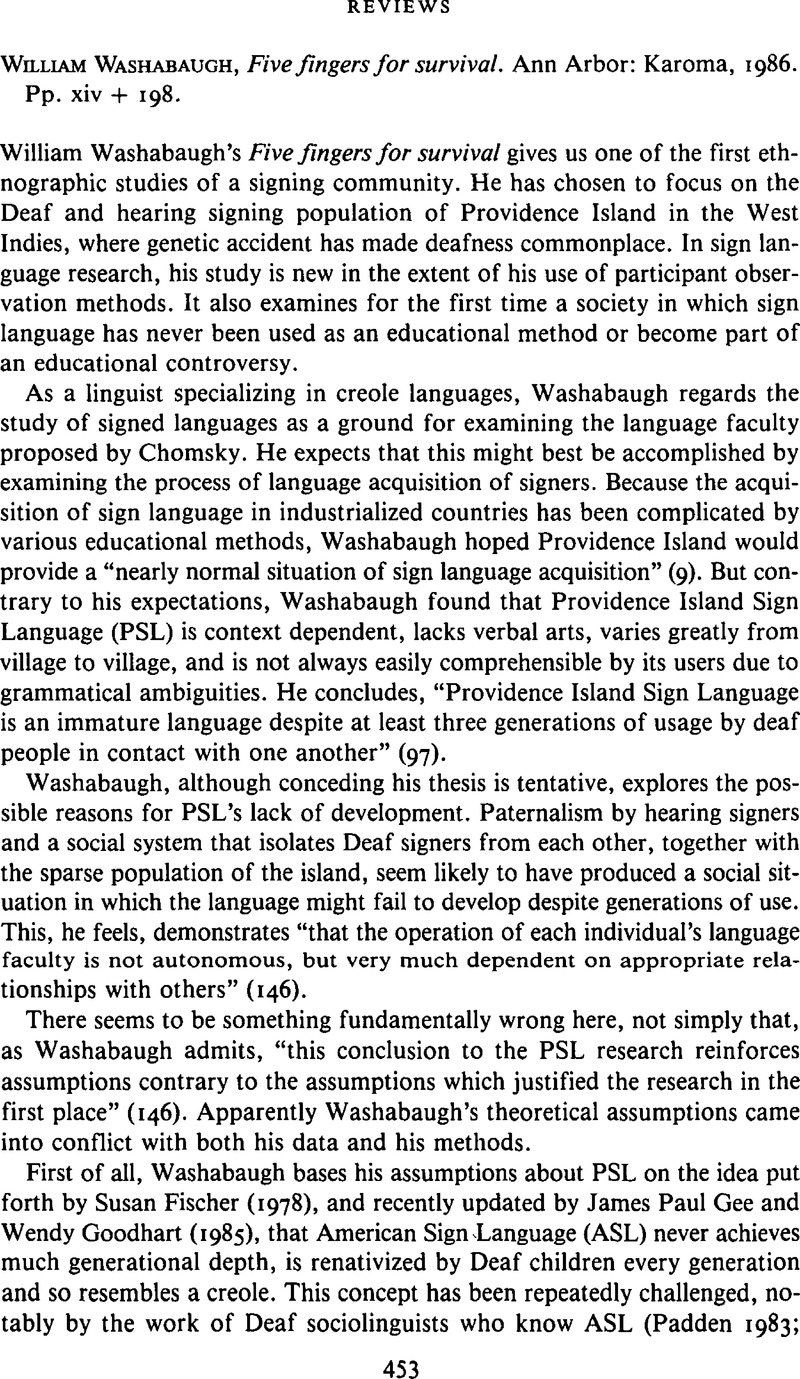Carmel, S. (
1981).
American folklore in the deaf community. A videotape by Gallaudet College Television, Washington, DC, in cooperation with the Smithsonian Festival of American Folk-life. Produced and directed by S. J. Carmel. 56 min., color, sound, sign, and voice.
Google Scholar 